Mahnmal für die Toten beider Weltkriege / Memorial for the Dead of the World Wars
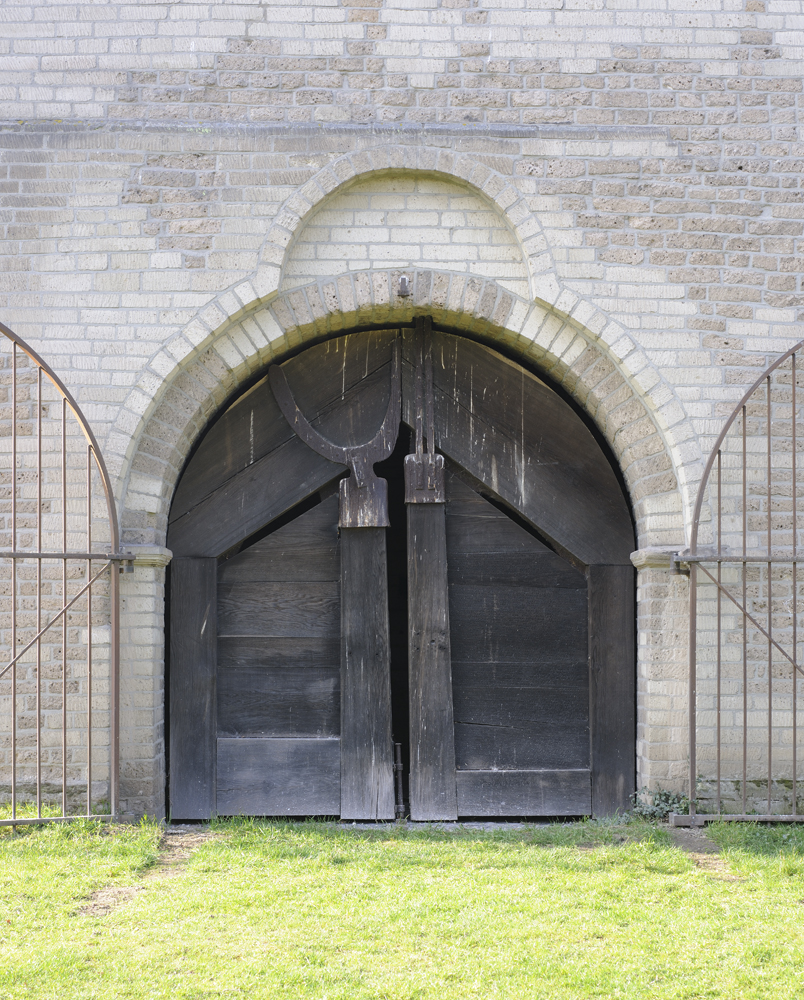
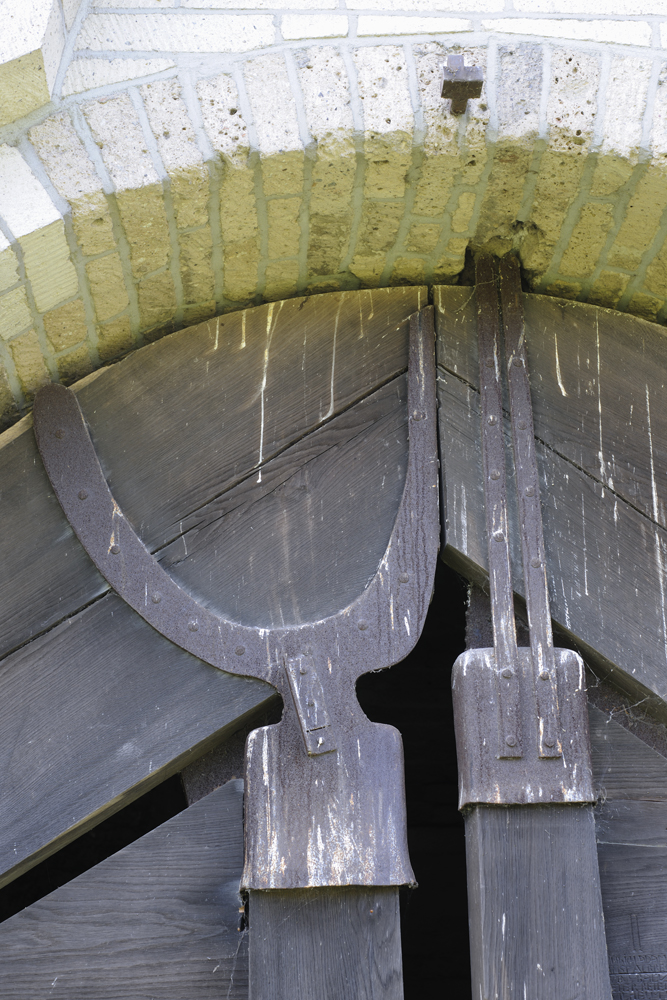


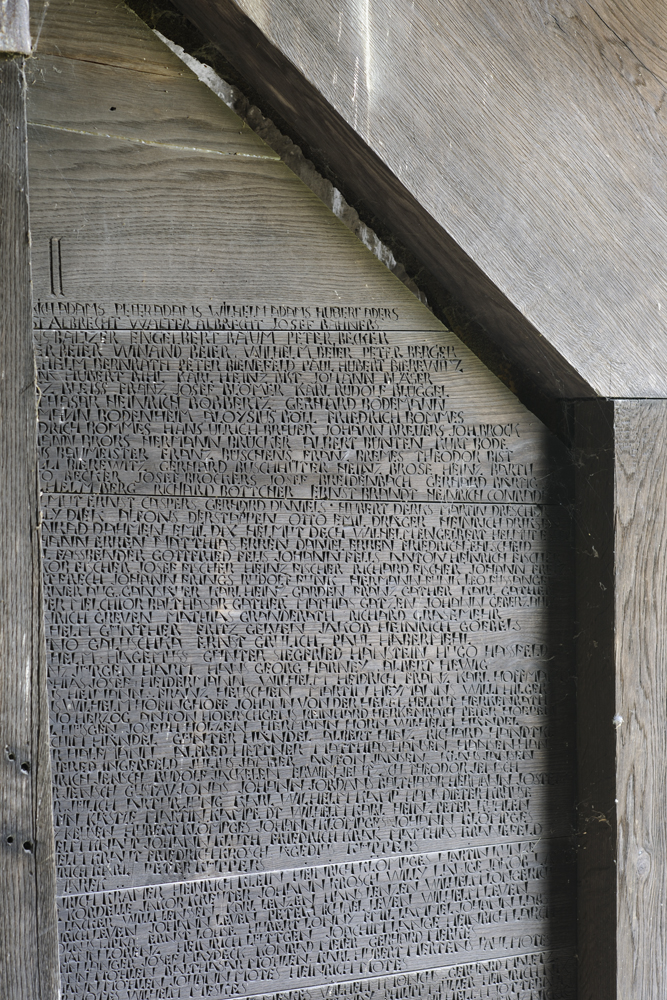
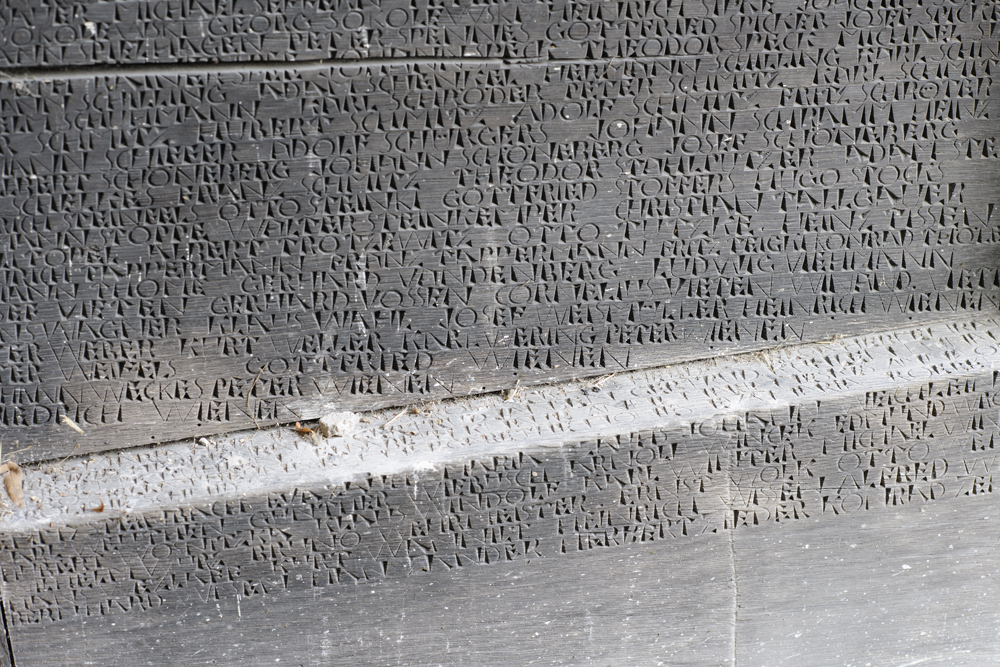
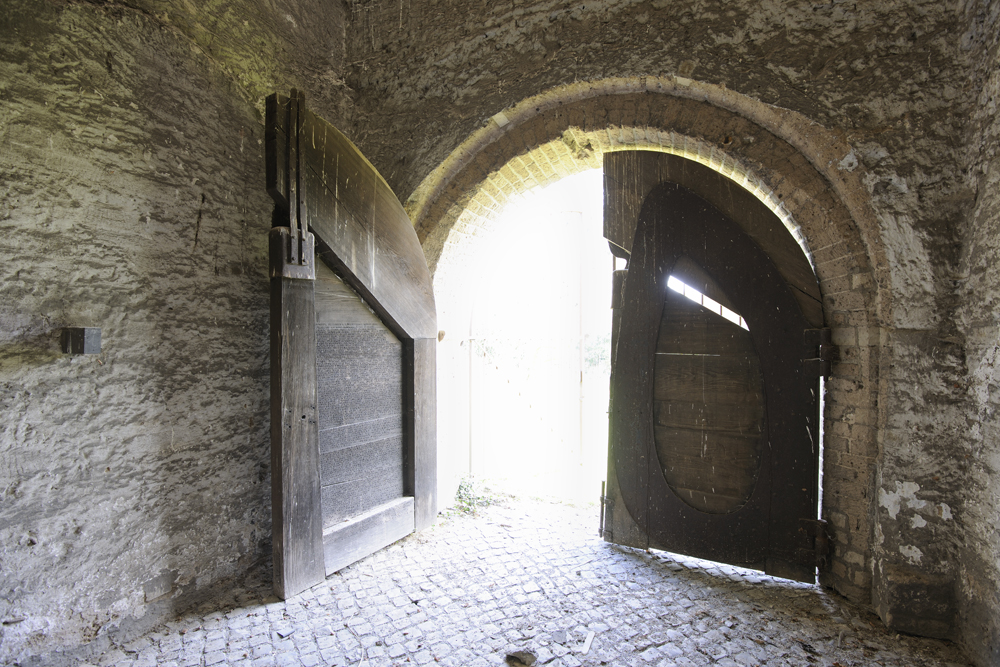
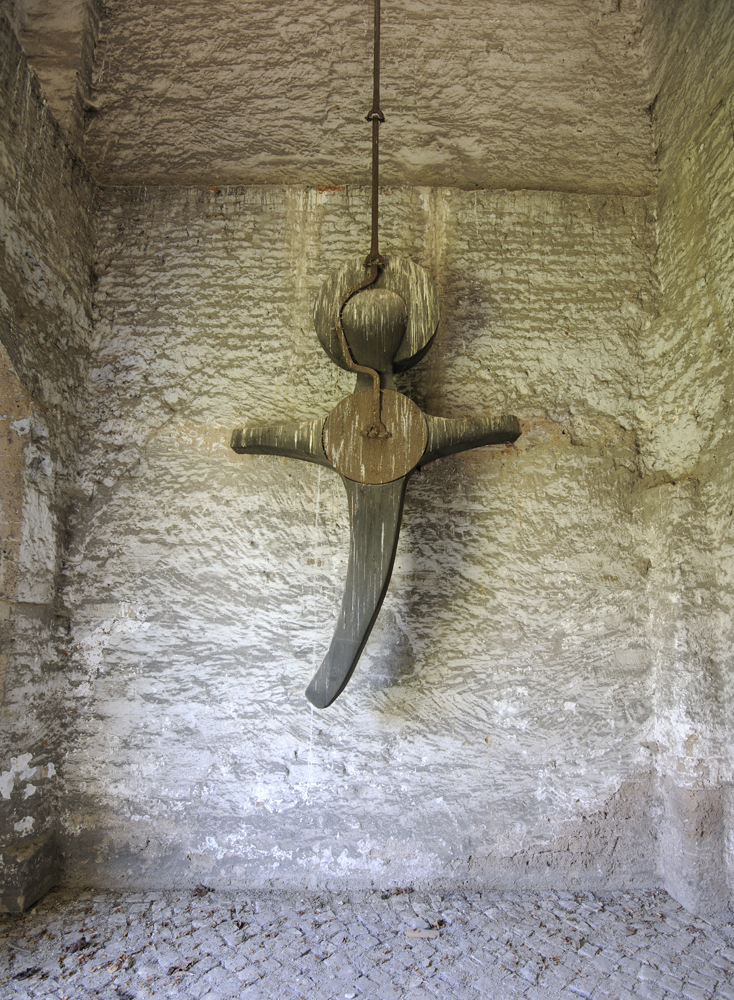
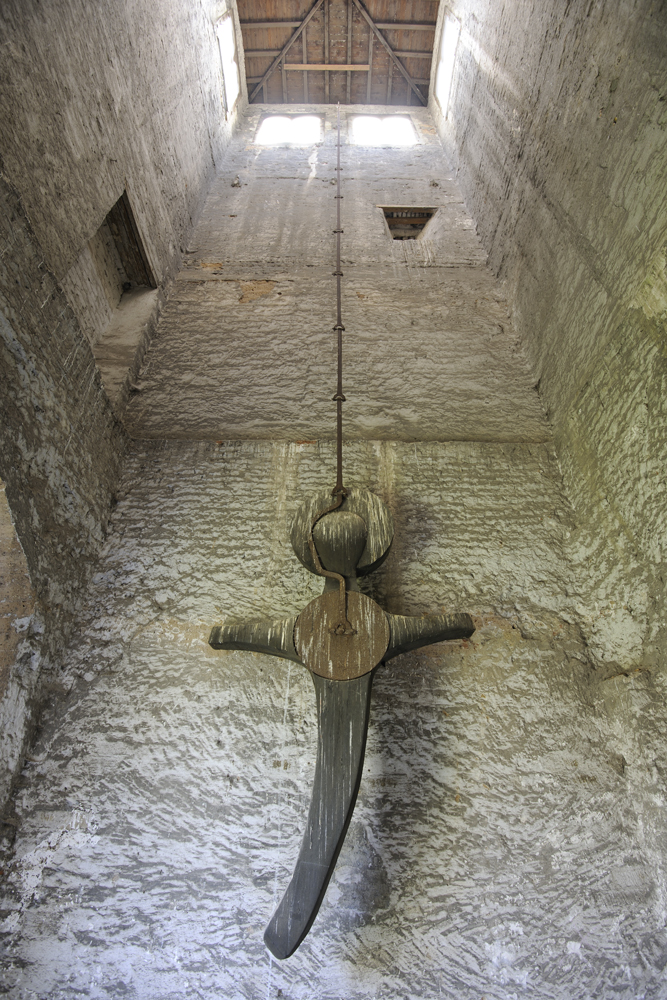
Joseph Beuys’s memorial is one of his earliest and largest works, as well as one of few artworks that have been preserved in their original context. The installation includes the “resurrection symbol” inside of the church tower and the portal, both of which were designed by Beuys himself. The tower was built around 1200 and is the only surviving structure from the Romanesque church that was dedicated to Saint Maurice. The church burnt down in 1891. In 1959, the borough of Büderich decided to transform the tower into a memorial for those who died in the world wars. They commissioned four artists for designs and decided on a proposal from the still unknown master student of Ewald Mataré.
In his studio in Kleve, Joseph Beuys constructed an oak gate with iron fittings that resemble archaic symbols, but could also be seen as weapons or other tools. On one leaf of the gate, he engraved the names of the 220 citizens of Büderich that died in the wars. Inside of the tower, the “resurrection symbol” is mounted on iron beams on the left side, rather than the front wall. This abstract element can be seen simultaneously as a crucified figure and as a figure ascending to heaven. There is also a sort of halo around its head, which makes associations with Christ even clearer.
A large round iron disk was embedded in the figure’s chest; a rod was used to connect this disc to the iron suspension system from above its head. The originally Christian idea that a connection to the universal transcendent space can be created through pain can be found repeatedly in the artist’s later work.
Further reading:
Holger Brülls, Kein Kreuz: Das Büdericher Mahnmal für die Toten der Weltkriege von Joseph Beuys, Meerbusch 1995, ISBN 3-9804756-0-3
Margot Klütsch, Meerbuscher Kunstwege, Düsseldorf 2010, ISBN 978-3-89978-132-8
Joseph Beuys
← Zur Startseite
Meerbusch-Büderich, Dorfstraße 50–52
